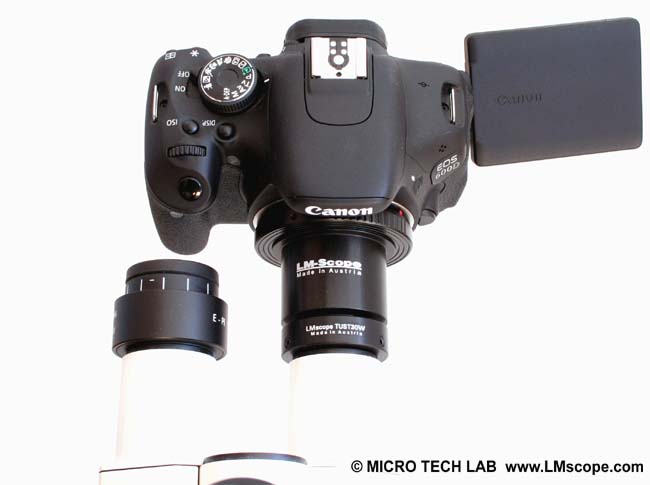

Zeiss Axiovert 5: Combining a top-tier microscope with high-quality cameras – an effortless task with our LM adapter solutions
Modern digital cameras, such as mirrorless system cameras, DSLRs and high-quality C-mount cameras, maximise the advantages of high-quality adapter and microscope optics.

The Zeiss Axiovert 5 is an inverted laboratory microscope designed for use in hospitals and laboratories, particularly for live cell imaging. Manufactured in Germany, the Axiovert 5 is equipped with Zeiss’s innovative IC²S infinity optical system and supports a wide range of transmitted light contrasting techniques: brightfield, multichannel fluorescence, DIC, iHMC (improved Hoffmann Modulation Contrast), phase contrast and polarisation. A reflected light option is available as well.
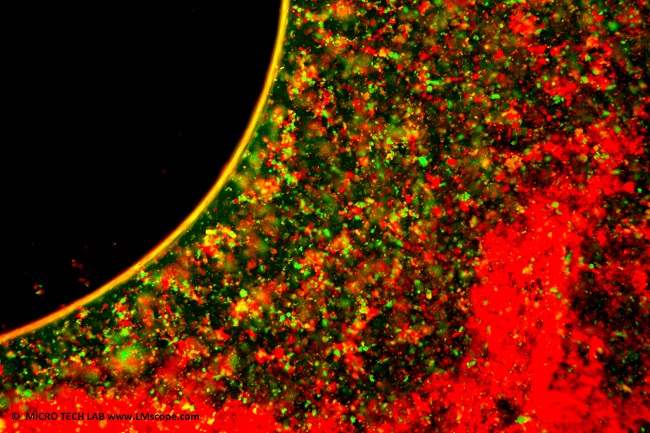
The 6-position objective turret with M27 objective thread is suitable for DIC sliders and encoded. This feature preserves the light intensity settings each time the objective lens is changed, thereby providing reproducible results. The Axiovert 5 also uses AI to optimise workflows (cell counting, reproducible cell experiments, flexible illumination). The following types of objective lenses (1.25x–100x) are recommended: Achroplan, Plan-Neofluar, A-Plan and A-Plan LD for transmitted light.
Zeiss advertises the Axiovert 5 as a stand-alone solution with no need for an extra computer or software, to be used in combination with a Zeiss C-mount camera (0.5-inch sensor format). The AxioCam camera models are recommended in particular – they can be controlled with Zeiss’s ZEN Imaging software or the Labscope imaging app.
With our flexible LM C-mount adapter solution, which features a modular design and built-in precision optics, other modern C-mount cameras with larger sensor formats (0.5 inch with filter, 0.7 inch, 1 inch) can also be used with the Axiovert 5 without any limitations.
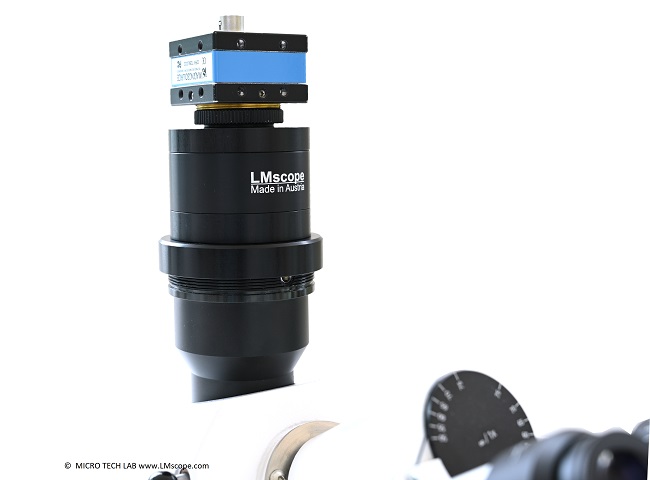
Due to its modular build, the C-mount adapter is highly versatile, and it also accommodates a range of additional accessories. The adapter comes with a filter holder with a 37 mm internal thread as standard, which offers the option of adding a variety of optical filters (polarising filters, UV filters, grey filters, etc.) for image optimisation.

The disadvantage of C-mount microscope cameras is their small sensor. In contrast, contemporary mirrorless system cameras and DSLRs have significantly larger sensors, usually accompanied by much better resolution and light sensitivity and an expanded dynamic range. For this reason, we tend to recommend these types of cameras for microscopy applications. Our LM SLR widefield adapter solutions with superior light-gathering capabilities and quality optics are optimised for large-sensor cameras and deliver the best results.
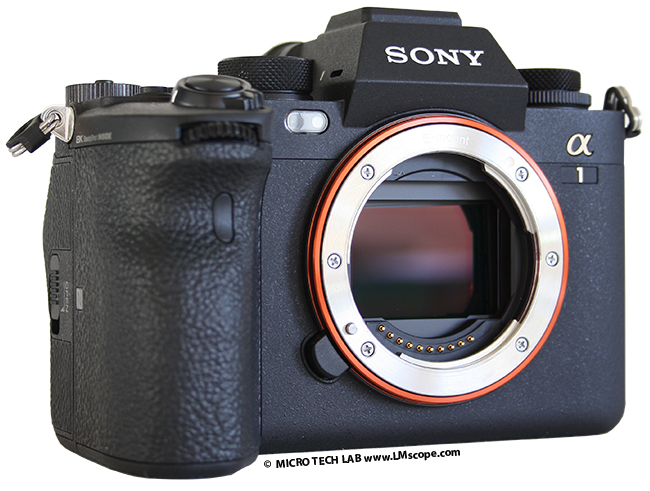
The Axiovert 5 is available with a number of different tubes, and we can offer an adapter solution for each of them:
1) Binocular tube (art. no.425523-9000-000)
For the binocular tube version, which doesn’t have a dedicated phototube, we recommend an adapter solution for the eyepiece tube (30 mm internal diameter). To attach the adapter, one eyepiece is removed and the camera-adapter combination is put into its place.
2) Binocular phototube, horizontal left port (art. no. 425523-9020-000)
This tube has a camera port with interface 60N. Our adapter solution can be attached to this connector, which has an external diameter of 52 mm.
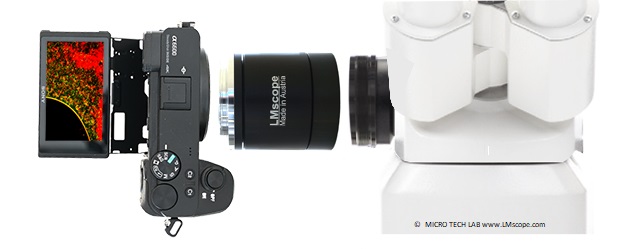
3) Intermediate tube for binocular tube
Like tube no. 2, the intermediate tube (art. no. 425146-9031-000) also features a horizontal lateral port. With this tube, a photo port can be added to an existing binocular system.
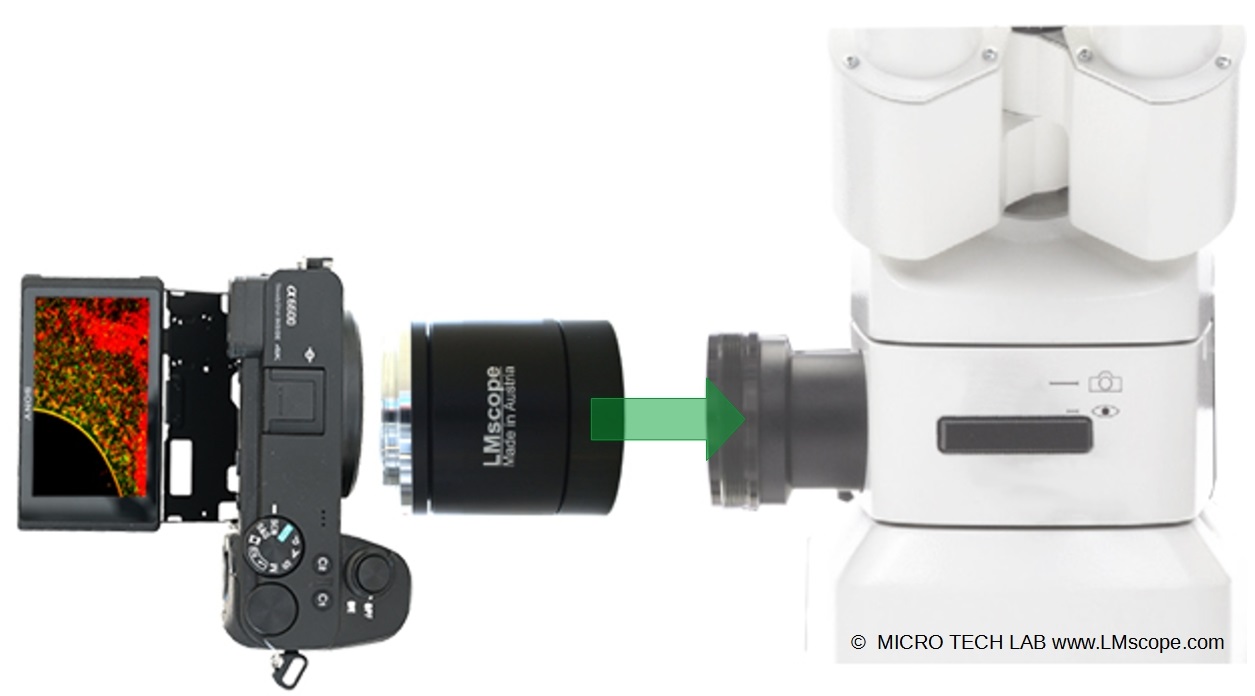
4) Binocular phototube with vertical port (art. no. 425523-9030-000)
If there is a choice, this phototube is the preferred option for attaching a digital camera, because the setup requires the least space and reduces stress on the connecting point, which also allows heavier cameras to be attached to the microscope without any issue.

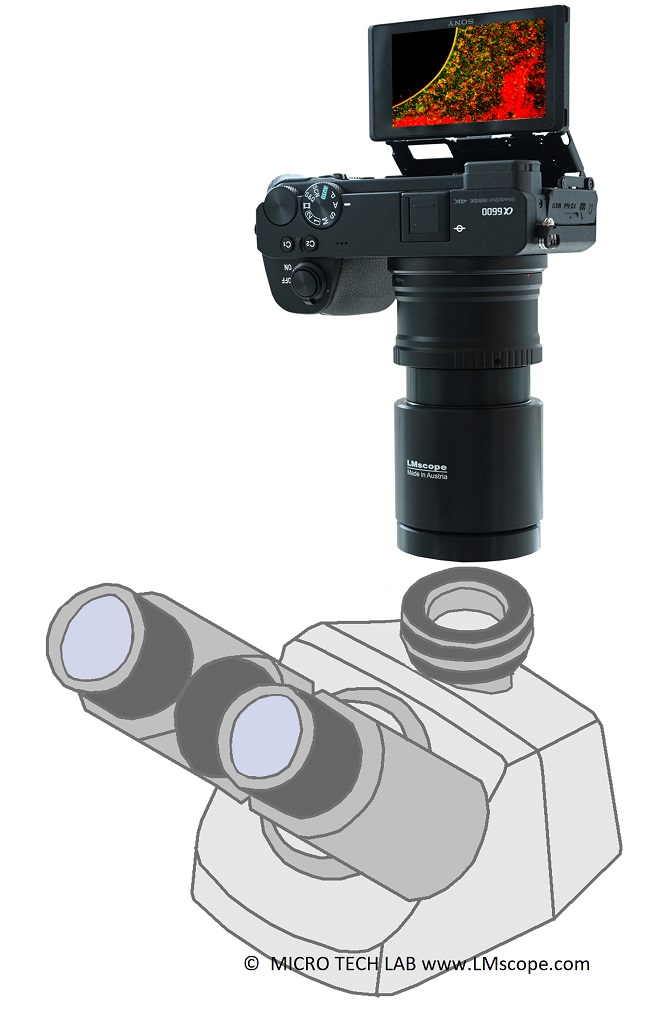
Conclusion: The modular design of Zeiss’s high-quality Axiovert 5 inverted microscope is exceptionally suited for photomicrography applications. It supports a variety of methods for camera integration. Our LM adapter solutions, featuring precision optics, enhance flexibility and offer cost-saving benefits because, in addition to standard C-mount cameras, they enable the use of an extensive range of high-resolution cameras with different sensor sizes on the microscope.
Photography:
Fitting the microscope to digital single-lens reflex (DSLR), mirrorless interchangeable-lens cameras (MILC ), digital single-lens mirrorless (DSLM) or C-mount cameras is easy with our LM digital SLR adapters, which feature a plan achromatic optical system. Our products make it possible to capture top-quality microscope images. To help you select the adapter that is right for your camera, we have set up an online configurator on our website. You can also email us – ideally with attached photographs of your microscope.
Modern DSLR and single-lens mirrorless (DSLM) offer the latest technology and are generally very well suited for microscopy applications. Most of them can be controlled remotely via PC/Mac. Because of their high sales volumes, they offer an excellent price/performance ratio compared to special-purpose microscope cameras.
Features of top DSLR and single-lens mirrorless cameras (DSLM):
- Large, powerful full-frame sensors (36 x 24 mm)
- Sensor resolution of 61 megapixels or 240 megapixels with Pixel Shift technology
- High light sensitivity (ISO 400,000+)
- Extensive dynamic range (up to 15 aperture stops/f-stops)
- Short exposure times (1/8000 second) up to 1/32,000 seconds using the digital shutter
- 4K Ultra HD or 8K Ultra HD video function
- Live video capture on external monitors in ultra HD quality
In most cases, these cameras are significantly more powerful than microscope cameras with smaller sensors (1/2" or 2/3"). On our website you will find our current camera recommendations and a camera ranking which is specifically tailored to microscopy applications.
